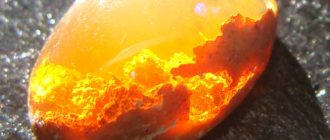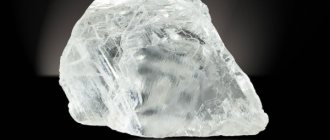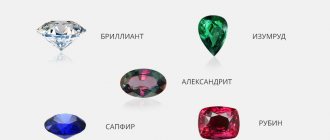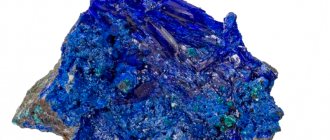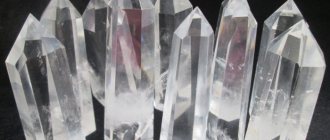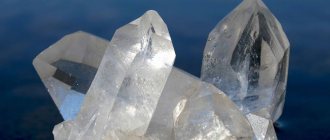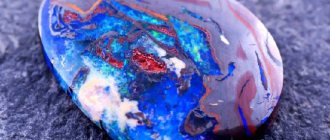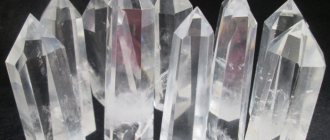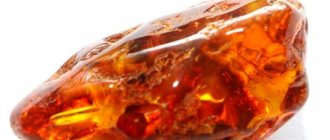Share with your friends!
- 2
All over the world we find massive crafted stones. Which sometimes weigh more than 1000 tons! But how exactly did our distant ancestors move these stones to the right place? Did they only use the strength of their hands?
Or perhaps, as some researchers suggest, our ancestors used some now lost technology?
Common sense dictates that all these stones were too heavy to move without the help of some kind of auxiliary device. But it is believed that in those days people did not have the necessary means to transport huge blocks over long distances.
Many similar objects have been discovered in Egypt. Let's talk about them. And at the same time, let’s think about how exactly they were delivered to their current location.
Titanic
In the list of the most massive objects transported by the human race, pride of place is occupied by the famous floating hotel, whose fate was tragic: already during its first voyage in 1912, the Titanic sank after colliding with an iceberg.
Currently, the oceans are plying such ships as the Oasis of the Seas, which are much larger than the ill-fated giant. However, modern ships do not have to be moved by land: the docks in which they are built are filled with water, and the liners go out to sea on their own.
Built at the Bristol shipyard, the Titanic, weighing 26,000 tons, was at one time the most massive object to ever move on earth. Workers needed at least 22 tons of soap and grease to create a 2.5-centimeter layer of lubricant on the slipway, along which the ship was safely dragged to the water in May 1911.
Titanic / ©Library of Congress/ Robert John Welch
Evaporation and desalination plant
In January 2012, it implemented an ambitious project to transport an evaporation and desalination plant. The weight of the giant was 4891 tons, height – 12 meters, and width – 34.
The transportation was carried out using a self-propelled modular vehicle developed by the German company Scheuerle Fahrzeugfabrik GmbH. The installation, intended for a seawater desalination complex in Saudi Arabia, was delivered from a South Korean plant.
The $1.5 billion project aims to provide precious drinking water to millions of people in the Middle East.
Scientific study and characteristics of minerals
One of the most interesting areas in the study of minerals is gemology, the subject of research of which is only precious stones. Although the term “precious stones” itself is completely arbitrary due to different approaches to determining their properties, it continues to be widely used, both in everyday life and in industry. Traditional or classical gemstones of the first order are diamond, emerald, sapphire, alexandrite and ruby. Other representatives of the mineral world, which are used in jewelry and other industries, fall under the definition of “other precious stones.” In some sources they are mentioned under a different name - “semi-precious stones”, although if we approach this issue from the cost side, then some of them are valued much higher than representatives of the classical group. Strictly speaking, gemstones must meet the following criteria:
• beauty and richness of color, beautiful tints and shine, as well as sparkle; • have a sufficiently high hardness, which allows them to be used for a long period of time, and also be quite rare and unique.
All these criteria, of course, are characterized by a high degree of subjectivity. Indeed, how can one determine whether a given stone is beautiful or not? After all, every person sees beauty differently. But there are still criteria for determining the beauty of a particular sample, which include the following characteristics: absence of flaws, purity and transparency, uniformity of tone and some others.
A few words should be especially said about the color of the mineral, since its value and uniqueness most depend on it. The different color of a mineral is given by the presence in its structure of a very small amount of impurities, both metals and organics. Fluctuations in their content, even in thousandths of a percent, can change the color of the stone to a completely different one. There are times when a stone with an unusual color is worth much higher than a clear diamond.
Meteorite
Anigito, also known as Cape York, is a giant iron meteorite more than 4.5 billion years old.
10,000 years ago, this celestial body fell on the territory of Greenland, breaking into several parts. For a long time, the Eskimos made tools and arrowheads from meteorite iron, until it was discovered by Arctic explorer Robert Peary in 1894. To deliver the fragments of the space guest to New York, the first and only railway had to be built in Greenland.
Fragment of Anigito / ©Flickr/ Fermion
Medicinal properties
Diamond ring
The healing power of diamonds is aimed at the overall health of the body. The stone affects a person selectively, providing assistance exactly where it is most needed.
Depressed people will come out of this state and see life in new colors, hot-tempered and irritable people will become calmer and begin to react more adequately to what is happening, those suffering from insomnia will get sound and healthy sleep, exhausted people will get a supply of energy, and will also get rid of chronic fatigue.
Lithotherapists also recommend diamond treatment for those who:
- Has various problems with the heart, gastrointestinal tract and respiratory system.
- Recently underwent surgery and serious illnesses for a quick recovery.
- Suffering from inflammatory processes of any origin in order to stop them.
- Suffering from schizophrenia to reduce the frequency of exacerbations of the condition.
Wearing a diamond for medicinal purposes will be useful for one and all to gain clarity of mind, maintain calm in stressful situations, improve overall well-being and increase performance.
Truck
Human tug Kevin Frast has an interesting hobby: he loves to drag heavy objects solely with the power of his muscles. Frast first entered the Guinness Book of Records in 1996, dragging a truck weighing 16 tons 30 meters.
Six years later, he improved his record with a 26-ton machine, and in 2008 he raised the bar to 57.2 tons. Kevin Frast doesn't just haul trucks: in 2009, he towed 8.8 meters... an airplane weighing 188.7 tons.
Tug Man Kevin Frast / ©SCANIA
Where was beauty born?️
There are two types of deposits:
- alluvial;
- indigenous.
Kimberlite pipes are the source of primary deposits. Their sizes are very different - from several tens of acres to 150 hectares. Most diamonds are mined in such pipes.
Placer deposits are formed when diamond-bearing rock is eroded and exposed.
10 largest diamond deposits on Earth - map
1. Aikhal. Russia. The Aikhal deposit, located in Yakutia, was discovered during an exploration expedition in the very early 60s. It consists of several quarries, the largest of which is the Yubileiny quarry.
2. Udachnaya kimberlite pipe. Russia. The northernmost diamond deposit, located just 20 km from the Arctic Circle, began to be exploited in 1982. But it was opened much earlier, in 1955. It is located 61 km. northeast of Aikhal.
3. Mir kimberlite pipe. Russia. The kimberlite pipe called "Mir" was discovered in 1955, according to the forecast map of the famous Soviet geologist Natalya Kind. Within 2 years, diamond mining began here, which continued until 2001.
4. Argyll. Australia. One of the most unique diamond deposits on the planet was discovered on the Australian continent in 1976. The fact is that this is the only lamproite pipe in the world, in the depths of which industrial diamond mining has been established.
5. Catoca. Angola. A fairly young deposit, work on which began in 1993, is estimated in terms of diamond reserves at 130 million carats. The mines are quite promising, but require large financial investments to increase production.
6. Kimberly. SOUTH AFRICA. South Africa is one of the world's leaders in diamond mining, and the group of deposits in the Kimberley area is one of the largest in the world. For example, the reserves of the Venice mine of the De Birs corporation are estimated at 102 million carats.
7. Deposit named after V. Grib. Russia. The Arkhangelsk deposit, named after the Russian geologist, was discovered in 1996. Mining work began in 2014, and total reserves are estimated at 70.5 million carats.
8. Jwaneng. Botswana. In the south of Botswana there is a quarry whose diamond reserves are estimated at 88.9 million carats. Today this is the richest deposit, if we count the total volume of diamonds mined in the depths of the mine.
9. Orapa. Botswana. One of the oldest diamond deposits on our planet is located near the town of Orapa, and mining of precious stones here began in the late 60s.
10. M. Lomonosov deposit. Russia. Diamonds in Russia are mined not only in Yakutia. Thus, the largest deposit in the European part of the Russian Federation, located near the village of Pomorye in the Arkhangelsk region, was discovered in 1980.
